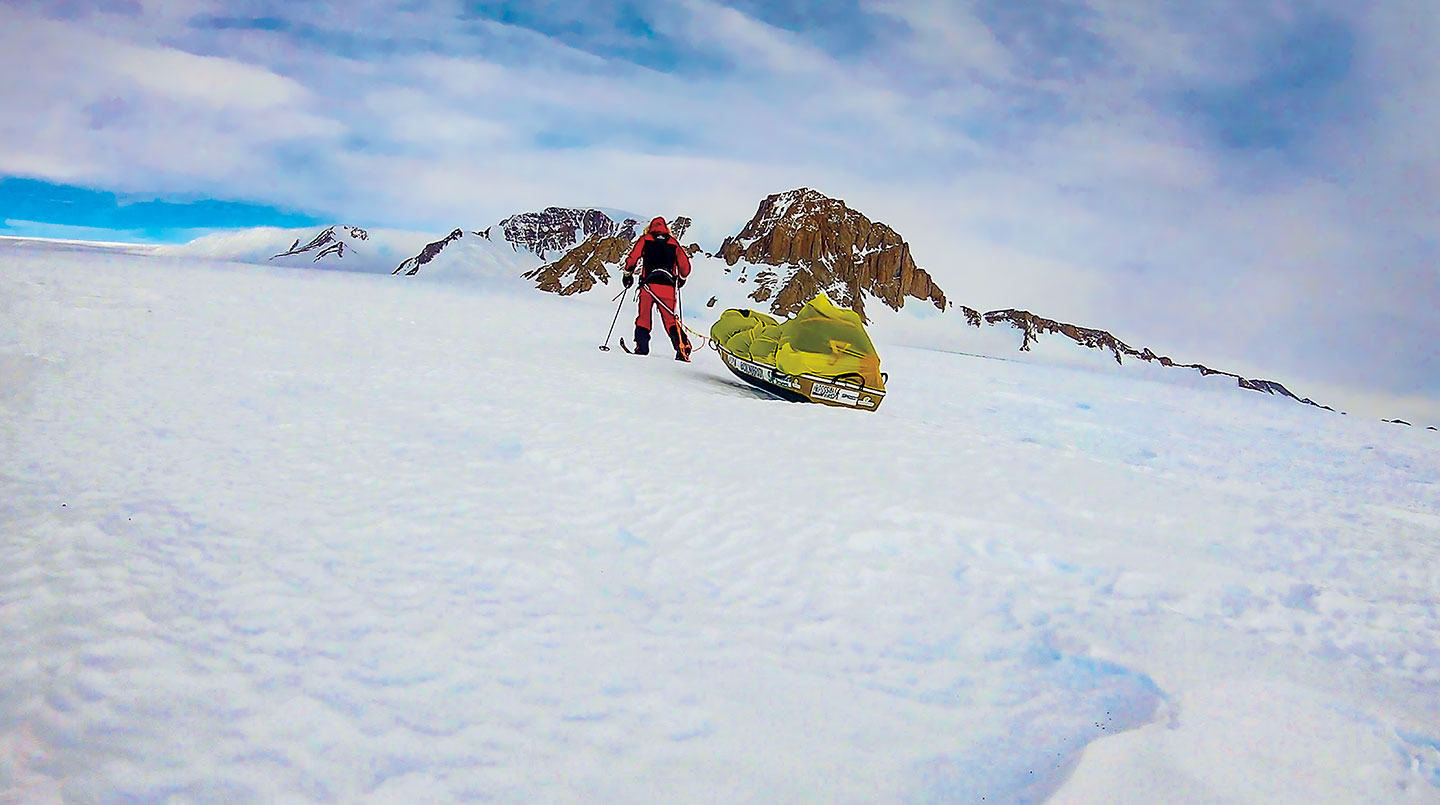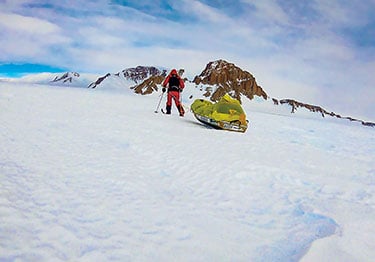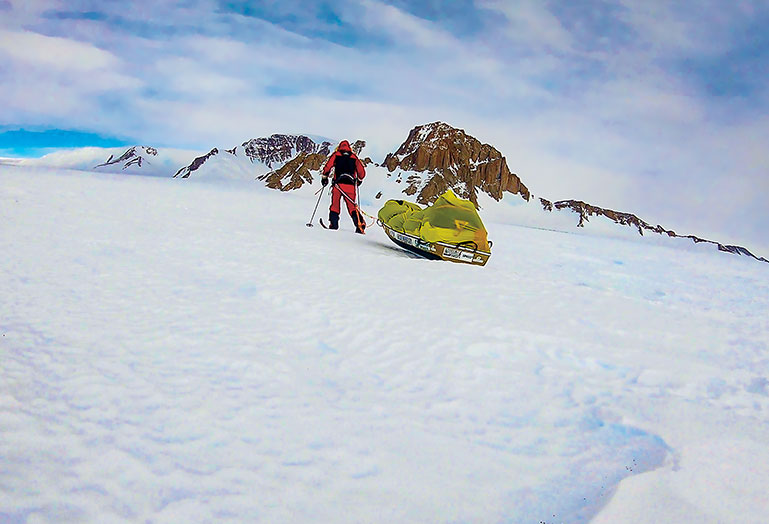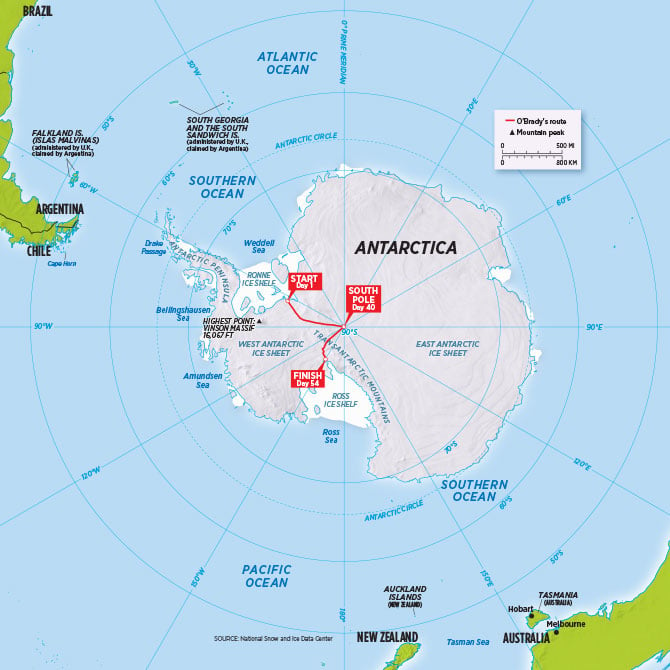
Courtesy of Colin O’Brady
Pausing for a selfie
Adventurer Colin O’Brady recently achieved what many said could never be done. This winter, he became the first person in history to cross Antarctica solo and unassisted. His trek across the icy continent took 54 days as he navigated snow-covered mountains and braved frigid temperatures.
While other people have crossed the frozen continent before, they did it with the help of fellow explorers, dogs, or other assistance. O’Brady, who covered 932 miles while towing a gear-packed sled, was propelled only by his arms and legs—and ironclad
Why did O’Brady, who had already climbed the highest peak on all seven continents, pick a solo, unassisted Antarctic crossing for his next challenge? Because, he said before starting his trek, “no one in history has ever accomplished it, and people have been trying for 100 years.”









